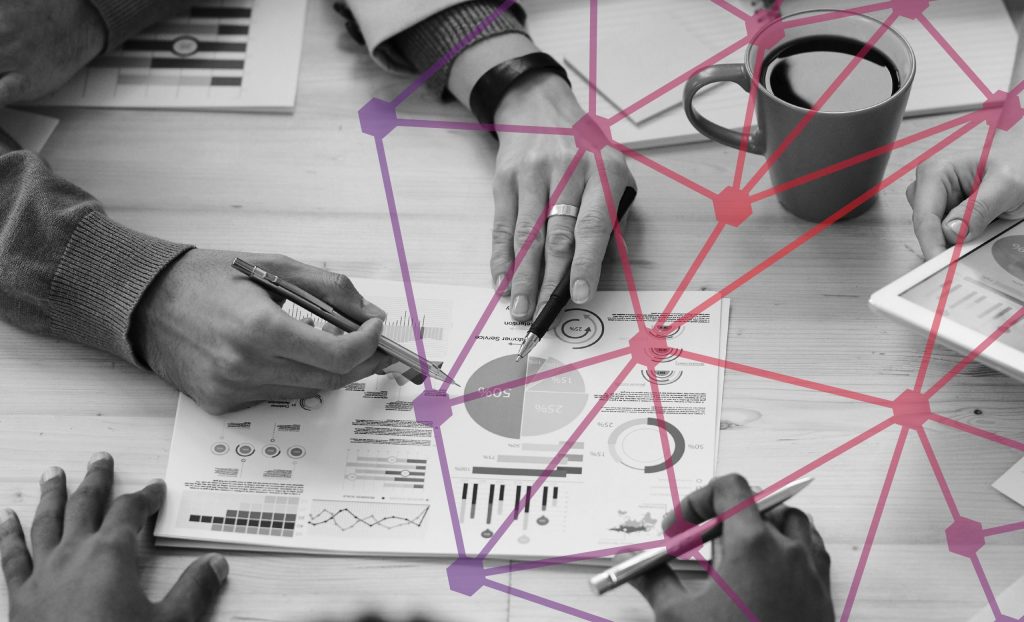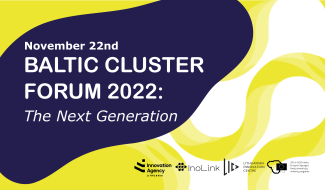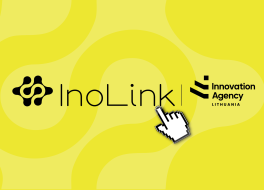Lithuanian cluster survey revealed changing directions of cluster activities

August 2020 the InoLink project together with Lithuanian Cluster Network organized a cluster survey that revealed changing directions of Lithuanian cluster activities. The plans and needs of the clusters in the new programming period will be the starting point for preparing the operational strategy of the national cluster association Lithuanian Cluster Network. The association was established a few months ago so that Lithuanian clusters would be represented with one voice both within the country and in the European cluster community.
At the European level we are very small
The results of the survey revealed the strengths and areas for improvement of the Lithuanian cluster ecosystem. One of them is the size of clusters. Lithuanian clusters unite on average 13 business enterprises, and the smallest have only 5-6 members. At the European level, these are very small clusters. “We look like an apple tree with a lot of small apples. In Latvia, for example, 16 clusters unite 600 businesses. Meanwhile, 777 companies in Lithuania are united into 57 clusters. According to theoretical recommendations, the healthy number of cluster companies should range from 100 to 300, so the question is whether clusters should remain as they are. We have to define those few branches of the apple tree – the axis around which we will concentrate – and by strengthening them to look for a place under the sun – who we may be interested in Europe,” states Giedrius Bagušinskas, the president of the Lithuanian Cluster Network.
There is no single predominant area of smart specialization
International cluster working groups are already discussing that in terms of smart specialization clusters should join large clusters between the regions. Meanwhile, the distribution of Lithuanian clusters among all seven areas of smart specialization creates preconditions for thinking about the development of cross-sectoral strategies and cooperation. Most of them – as many as 38% of clusters – are focused on new production processes, materials and technologies. 24% focus on an inclusive, innovative and reflective society and a fifth – in smart, clean, integrated transport; health technologies and biotechnology and information and communication technologies.
All clusters are involved in R&D activities
The results of the survey reveal that all clusters carry out R&D activities, but ensure it differently. R&D projects within the cluster companies take place in all clusters, 52% of the respondents carry out joint R&D projects. 48% of clusters by researches from universities participating in the cluster and 24% buy it from third parties.
According to InoLink project manager Jolita Razumienė, although there were fewer cluster consultations on R&D activities during the quarantine period, this does not reflect the real situation: the statistics of the recently completed investment instrument Experiment describe it more precisely: clusters successfully carry out R&D activities.
The prevailing cluster activities are changing
Among the activities carried out in recent years (2018-2020), still prevails export development – as many as 71% of clusters are engaged in it. In second place in terms of popularity is the development of competencies of current members, optimization of the value chain, creation and development of new goods or services. 43% of clusters are already involved in international cluster activities and transnational projects, and almost a fifth are involved in the circular economy and bioeconomy.
During the new programming period, 2021-2027, 86% of clusters plan to create or develop new services or goods and carry out joint R&D projects. 76% of members among the planned activities list competence development, value chain optimization and export development.
As many as 81% of clusters intend to participate in international cluster activities and international projects. “The European Commission wants to see interregional cooperation and innovation. The support for the creation of pan-European clusters is planned,” says G. Bagušinskas, adding that the most older states see clusters as international structures that combine different competencies between countries and play a scouting role. Denmark is given as an example: it has 36 clusters that work with 66 foreign countries and exports their know-how through the clustersworldwide.
Starting cooperation with Digital Innovation Hubs
G. Bagušinskas reports that the idea of close cooperation between clusters and Digital Innovation Hubs (DIH) is already being developed in the European Cluster Alliance, the European Commission and other working groups. This initiative will be strongly supported in the next programming period as well. It is planned that each member state will have officially approved and co-financed DIHs.
In Lithuania, 33% of clusters are already involved in DIHs. As explained by the director of the Lithuanian ClusterNetwork Kristina Šermukšnytė-Alešiūnienė, the whole of Europe is moving towards a twin transition – sustainable and digital economy – where DIH becomes the main tool. Therefore there is an inevitable need to strategize how Lithuanian clusters can actively participate in this process and work with DIH digitalizing value chains.
The association benefits clusters on different activities
Although the idea of clustering was to promote exports, the results of the survey confirm that companies no longer see each other as competitors, but as cooperating partners between sectors or clusters.
K. Šermukšnytė-Alešiūnienė noticed that in the survey clusters listed many activities benefiting from the association’s assistance in consultations and representation. They see the Lithuanian Cluster Network as the most useful for initiating and coordinating cross-sectoral cluster projects (90%) and participating in international cluster activities (81%). “Good results will not be achieved in all areas, so it is logical to pick out activities relevant to the prevailing proposals and priorities of the new programming period. On other issues clusters will always be able to contact the Network and get the answers,” said the head of the association.
InoLink is a project of the EU instrument Inogeb LT, implemented by the Agency for Science, Innovation and Technology (MITA) in cooperation with the Lithuanian Innovation Center. The project aims to promote the clustering of companies, increase cluster maturity, promote growth, and international cooperation.



